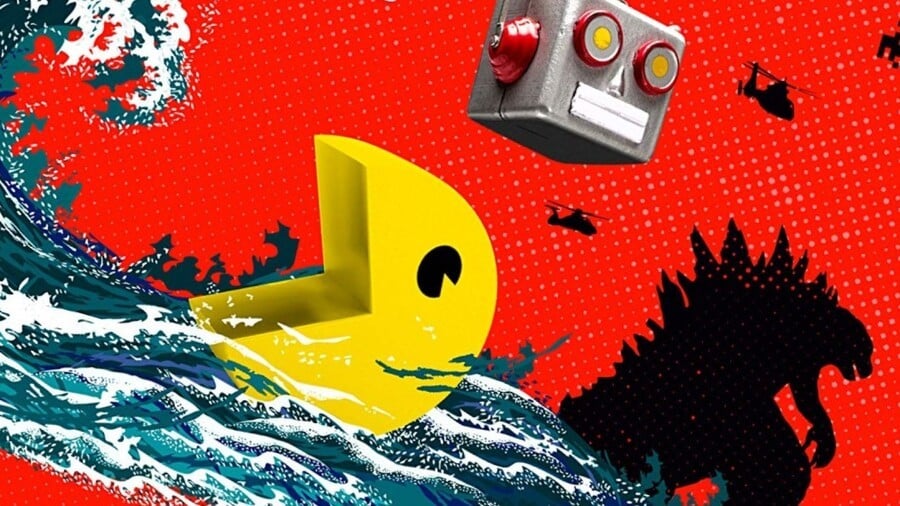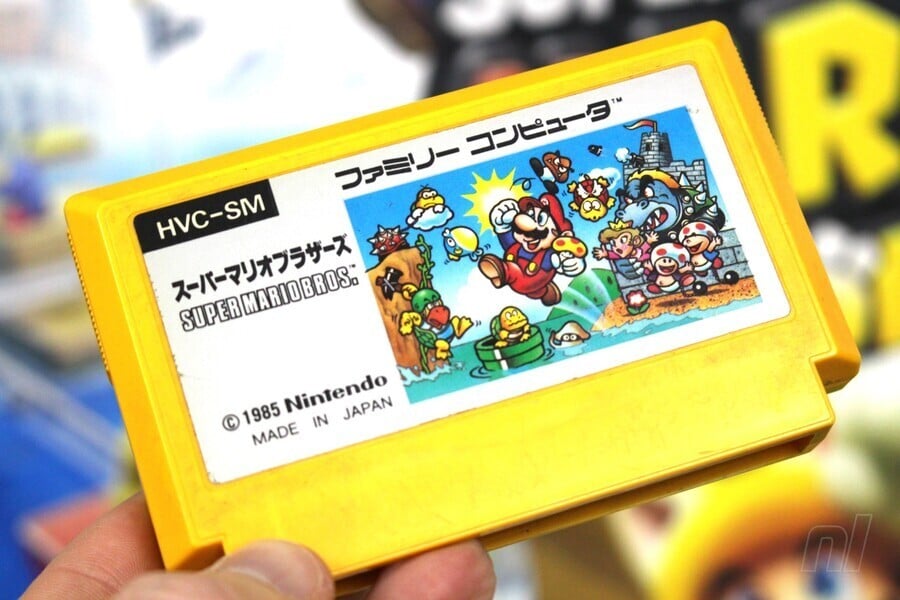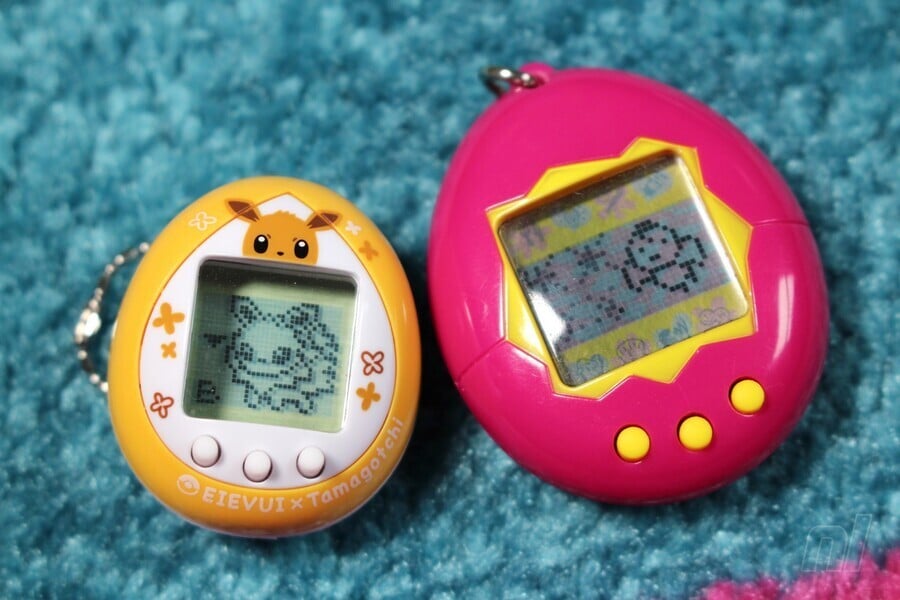
The Back to the Future movies might be best known for their seat-of-your-pants time-hopping sense of adventure, whip-smart structure and American nostalgia, but they also serve as a socio-economic lens on the time in which they were made. Marty McFly, for example, might not return to exactly the same 1985 he left in the opening act of the first film, but that’s okay because his father is now a successful author with a BMW — a concise piece of commentary that sums up the prevailing political outlook of the ‘80s very well.
Another moment occurs in the third and final (until the inevitable reboot) film when ‘50s Doc Brown comments that a failed DeLorean component has ‘Made in Japan’ written on it. The joke that follows relies on knowledge that post-war Japan transformed itself in a very short period of time to become an economic powerhouse and mass exporter of the finest technology — something that would have seemed unimaginable in the 1950s, although the seeds of its revival were already sown and sprouting.
Much like Marty McFly, for a generation who grew up playing video games since childhood, veneration of Japan and the Japanese creators who have shaped the medium isn't exactly unusual. Whether you're a hardcore enthusiast with a huge console collection or an occasional player who enjoys the odd round of Mario Kart, Japan's influence on gaming and gaming-adjacent pop culture is apparent to even casual onlookers, and many of us share an admiration — and fascination, even — of all things Japanese.
What might surprise you is just how profoundly Japanese products and ideas have informed global tastes from the post-war years to the present day, forecasting and birthing trends that would take the West by storm months, sometimes years, later.
That's the thesis of a new book written by Matt Alt, Tokyo-based author, translator and localisation specialist. In Pure Invention: How Japan's Pop Culture Conquered the World he posits that Japan has led cultural trends around the globe since the mid-twentieth century through the invention and distribution of various significant but crucially inessential devices.
"It's a story about products," Alt tells us via email, "but even more about the human dramas playing out behind their creation and adoption. Products are how the vast majority of humanity interacts with Japan on a daily basis, but most consumers know little if anything about the people and the society that gave rise to them." Obviously, the list of consumer products that originated in Japan is very long indeed, but Alt came up with criteria to narrow the field and give the project focus. Ultimately, the book includes some very different but equally influential products, including Sanrio's Hello Kitty, Sony's Walkman and online imageboard 4chan, as well as Nintendo's Famicom/NES, the Game Boy and Pokémon - all of which he explores in detail.
"I had a general sense of the sorts of products I wanted to cover, but there are so many out there. After a lot of thinking and many discussions with other people, I came up with the framing concept of "fantasy delivery devices." Products that are inessential, inescapable, and influential (in terms of changing the way we look at the world, or Japan, or both). That really helped guide the final selection."

So, it wasn't simply a case of picking a bunch of cool products; there were good reasons behind choosing the Famicom over, say, the best-selling video game console of all time. "I picked the Famicom over the PlayStation 2 because I was most interested in unraveling the stories of how the very first iterations of a given fantasy-device came to be. The reason being, I was interested in that phase shift, the rare moments when a product transformed into something more than just another product to become an entirely new way of living. The Famicom represented the advent of modern console gaming, with all the ripple effects that had on the way we spend time with each other and alone, even our identities. The PS2 was a great machine, but by its very nature was derivative — there's that "2" in its title. The PlayStation gets more attention in the book as the moment 3D gaming came into our lives, and for serving up one of the most compelling fantasies of all, Final Fantasy VII. So too Gunpei Yokoi's Game Boy, which taught us the pleasures of gaming on the go, often together with friends. The Game Boy, and Satoshi Tajiri's Pokémon Red and Blue, are the real stars of the video gaming chapter."
I came up with the framing concept of "fantasy delivery devices." Products that are inessential, inescapable, and influential
Given the wealth of potential products to research and write about, some personal favourites inevitably fell by the wayside. "There were many things I wanted to cover but couldn't due to space constraints or simply keeping the narrative moving. There's a great story to be told about Nintendo's earliest days, as a struggling toymaker in the 1960s and 1970s. Another thing I wanted to cover but ended up not was what I call fantasy foods — things like Cup of Noodles, or even sushi, that profoundly transformed our palates and lifestyles. But they're foods and thus "essential" — if you're hungry enough you're going to consume them out of need. I was more interested in things that compelled us to consume them out of something other than necessity, because that says a lot more about them, and us."
Alt has lived in Japan for many years now, but he felt an attraction to the country and its cultural obsession with all things robotic and kawaii (meaning 'cute' or 'adorable' - think Hello Kitty, Kirby or, yes, Mario) long before he moved there. "I have always felt the pull of things Japanese," he says. "When I was a kid, growing up in the Seventies and Eighties, it was mainly toys: giant robots, monsters, and superheroes so different from the ones in Western fantasies. There are a lot of books out there that do deep dives into specific aspects of Japanese culture, like kawaii or video games or anime and manga, but I wanted more of a birds-eye view that explored the big picture of why the tiny island nation of Japan has such an outsized cultural gravity on the global stage."

While providing that historical bird's eye viewpoint, Alt also manages to succinctly explore how young people worldwide have increasingly tied their identities to products over the last century. "Things from Japan are so key to our leisure lives, our fantasy lives, even our identities. I wanted to try and quantify that phenomenon, and I knew it had to be multi-faceted in its approach, because even if you're (say) a gamer you're undoubtedly at least aware of anime or karaoke or Hello Kitty or Marie Kondo or what have you. There's a lot of cross-pollination going on. That's where the idea of the book came from."
One key aspect that Alt highlights early on is how, contrary to the West, there’s never really been a culture of putting aside ‘childish‘ things in Japan. "The first foreigners to visit Japan after the opening of its ports in the 1850s were shocked by how much effort Japanese put into making toys and how many Japanese continued to play with them into adulthood. That sense of play is really key to Japan's shokunin (craftsperson) tradition, in which artisans honed their crafts along traditional lines for years before striking out with something ingenious and new. Japan has been home to large cities for many hundreds of years, and those vibrant urban centers, like all vibrant urban centers, bred a hunger for novelty in the form of new trends or products or whatever stimulates and amuses. Back then, it was amusing poetry in the form of senryu and haiku or thrilling kabuki performances or visually striking woodblock prints. In our modern consumer era, it takes the form of elaborate action figures or fun electronic gadgets or new games. But the underlying hunger for something new and fun is exactly the same."
Back [in the 1850s, novelty] was amusing poetry in the form of senryu and haiku or thrilling kabuki performances or visually striking woodblock prints. In our modern consumer era, it takes the form of elaborate action figures or fun electronic gadgets or new games.
That hunger is arguably reflected in the multi-generational appeal of Nintendo’s products and the company's mission statement to "provide products and services that surprise and delight consumers". The notion that in Japanese culture ‘copying’ doesn’t carry the negative connotations it does in the West is particularly fascinating in light of Nintendo's early ventures in the video game business. In its pre-Famicom days, the company explicitly copied ideas and concepts from others, and Yamauchi even once suggested that “everyone should release their software openly” - an interesting contrast to the company's modern approach, and one which seems incompatible with the business realities of IP protection.
"It's a quote that hasn't aged well for him, to be sure," Alt agrees. "He said it back in the late Seventies, when Nintendo was essentially a copycat, producing clones of more popular games like Pong or Breakout or Space Invaders, and rightfully taking a lot of heat for it from other game makers. By all rights Nintendo could well have ended up a footnote in gaming history, but key hires like Gunpei Yokoi and Shigeru Miyamoto transformed them into a Disney-level cultural powerhouse — literally, as in more children recognizing Mario than Mickey by the early 1990s. The reason being that those two turned out to have a knack for storytelling through the medium of games. Once Nintendo emerged as the industry's leader in the mid-Eighties, Yamauchi really cracked down on anyone infringing on Nintendo's intellectual property, or even simply producing compatible games without Nintendo's express permission, which says a lot about how he really felt."
While researching for the book, Alt was able to talk in-depth with several of the people behind the products, including the designer of the Famicom, Masayuki Uemura, and it turns out that Uemura had an unexpected link to one of the other products Alt was writing about.

"As someone who grew up playing the NES in real-time when it first came out, I was overjoyed that Uemura-san agreed to talk to me. Right at the start of the discussion it emerged that he'd agreed to speak with me because he saw (in the proposal I'd sent) that I was writing about Kosuge's Jeep, a tin toy made out of metal scavenged from U.S. military bases in 1945. It was made by a toymaker named Matsuzo Kosuge, and seems to have been the first domestically manufactured product put on the Japanese marketplace after war's end. Uemura grew up playing with those jeeps himself. Making the connection between that toy and the even bigger hit Uemura ended up making decades later was really a profound moment of connection for me."
Reading the book (or listening to the audiobook, in our case), the links between these seemingly disparate products and trends occur more frequently and blend together more naturally than you might imagine. We wondered if the book's through line from post-war societal conditions to Pokémon and 4chan was mapped out in Alt's mind from the very beginning or if it was found in the writing and research.
even when I couldn't meet [a creator] personally, there was plenty of interesting information out there. Sometimes even more so, as memories can fade over the years
"A little of both," he continues. "The Walkman (1979) is necessarily going to come before the Famicom (1983). But it was important that each product tell a different facet of the overall big-picture story, so there's some back and forth, such as how Mario pops up in the Hello Kitty chapter, as another example of bobble-headed kawaii design, even though she's from 1974 and he's from 1981. I have to give credit where credit is due here: my editor, Meghan Houser, was an absolute whiz at structural advice and really helped me refine the narrative that way."
While Alt was fortunate enough to interview several of the people behind these fantasy delivery devices, others proved more elusive. "Without going into details, I'll just say that big companies often don't have much incentive to work with writers who aren't under their direct control. Fortunately, there is a wealth of information out there in Japanese; most key creators have already been interviewed extensively or even published memoirs themselves, so even when I couldn't meet one personally, there was plenty of interesting information out there. Sometimes even more so, as memories can fade over the years. Old interviews from Japanese TV and magazines and books were a godsend, and often filled with details that differed from those of more modern tellings. Companies often try to reinvent their histories as time goes on, so it's important to go back to that kind of material even when you do land an interview."





Comments 34
Nice! When does the book come out?
Ahhh, I've seen that young man, Matt Alt on NHK World - My FAVORITE CHANNEL!!! It's so peacful & interesting at the same time. It's amazing. Love that Science View show, Trails to Oishii, Somewhere Street... and a bunch of others<333333 haha
It’s nice getting articles like these.
Just got the book. Excited to read through it.
This was a great article! Wonderfully written. It's interesting to analyze the perspective of an outsider who will get as "in" as someone ever will.
Sounds like a fascinating read.
While Japan dominate the games market and have many electronic companies. They don't really dominate other product markets. Phones, Cars, white goods, software are just a few examples.
Really does sound like a fun read. Surprised that certain faces on this site aren’t here saying that NLife only writes clickbait about leaks 🤔
@nessisonett You didn't see this feature, it's an optical illusion.
Great article and I'd love to check out the book someday. More like this, please!
@Marioman2020 already out. Just bought it on kindle.
Thanks for highlighting the book on the website! I hadn't heard of it
@Goat_FromBOTW that's a new one. Where did she get that?
@Goat_FromBOTW Oh man, that’s incredible. The reasoning is so insane that it defies all logic! Plus, I really really dislike the horrible queerbait shows like most sports animes, they’re completely made for female fans. If anything, anime makes me less gay 😂😂
@zool Title of the book includes the words "Pop Culture". I don't think it's about world domination, just that Godzilla is as well known as Mickey Mouse. The idea is good, the title less so, I'd still wager US dominates the world in pop culture, Japan may be 2nd though.
USA and Japan dominates the culture around the world.
Mickey and Mario together!😊
@rjejr pop culture that was invented and is dominated here in the UK.
@Goat_FromBOTW oh jeez, I thought this happened like 20 years ago. Haha
@Mando44646 I have to admit I was somewhat surprised by that. And here was me thinking attitudes had somewhat changed 😂
This rings very true to me, as most of my favorite stuff comes from the land of the rising sun. Games, anime, manga, cars, motorcycles, food... so many things to like...
It is said that atop Mt. Fuji sits a stone, under which lies the entire earth... woah...
@zool
Isn't that pretty much the case with every country and their respective movies, music, books, etc.?
Bollywood movies make big bucks in India and its surrounding countries. Chinese media tends to make more than overseas stuff.
I have to agree with @rjer US and Japanese media seem to be pretty universal from what I've observed. Everyone knows who Mario, Godzilla, or Goku and even if you haven't watched much anime you know the tropes.
@Toy_Link pop culture, originated in the UK and travelled worldwide. Beatles, Stones, Who, and many other Bands from the swinging sixties.
@rjejr Hey there! Been a long time. I presume you are gaming/commenting on the PS4 more, lately? We finally got one and I carved out enough time to play through Jedi Fallen Order a few times which I really enjoyed. Kids loved Spiderman and Horizon Zero Dawn. PC games and VR are in the house, as well. Occupational benefit.
I'm still a — I hope rational — Nintendo fanboy. Finally got my hands on Wargroove and that is very nice. Pixel art (your favorite! ) but very appealing and much more polished than I expected. They really aimed for Advance Wars quality.
Things are crazy with the wife and I both teachers during this time. Hoping you weren't hit too hard. Fortunately the college I teach at has been on top of preparing for continual changes since end of April amazingly and iterating along keeping. Money to keep running is a problem, though! My wife's school is finally figuring things out and the plan is changing/improving daily. Kindergarten, though, right? During a pandemic. Fun times
Great idea for a book!
I clearly remember not being able to put my finger on why Super Mario Bros. was so odd and so appealing. Then I watched it being played (in an arcade first!) and played it and the gameplay sucked me right in.
Same with Anime, kind of. Robotech (the American dub/rework of those 3 anime series) was so odd and yet had this craft to it that was unmistakable. Then, Nausicaa (actually the hacked up Warriors of the Wind, at first) completely transported me and that was artistry - Hayao Miyazaki. Then Akira. The first encounters with these exports really shaped my taste.
(Never did get into the wider anime / manga scene much, though. It just wasn't nearly as good and some of the tropes and norms just never appealed.)
Just picked this up on Kindle. Matt Alt and his wife, Hiroko Yoda, have also written some fantastic books on Yokai and Ninja that are well worth a look!
https://www.amazon.co.uk/Yokai-Attack-Japanese-Monster-Survival-ebook/dp/B00E257W46/ref=sr_1_1?crid=22VE4W6BC3KUN&dchild=1&keywords=yokai+attack&qid=1598104071&s=digital-text&sprefix=Yokai+atta%2Cdigital-text%2C177&sr=1-1
More articles like this please!
I had a Tamagochi and it was awesome!
I must admit I do not enjoy Japanese things like Anime, Manga etc. but their games targeted for the west are just amazing.
Pokemon, Mario, Monster Hunter are the best of the best.
And the GREATEST franchise ever created (at least for me) Castlevania is made by Japanese masterminds. They just know what would appeal to us!
Japan wants to have the Culture Victory in Civilization
I heard Alt talk about his book on Retronauts. Great episode. I have this book on my Amazon wishlist.
Japanese pop culture is distinctly different than most western nations' pop cultures. It provides an alternative for people in the west who don't enjoy the "traditionally popular" things. Western cultural imperialism has spread to and warped most countries - and yet Japan has still managed to develop a lot more of their own content and I for one consider that an absolute blessing. Japan has managed to retain their own identity very well and not only that but also appeal to people outside their nation like no other nation aside from America and Western Europe.
And it's not as though people in Japan don't also like western pop culture. There are people there who enjoy western media too. But Japan in general has done a far better job than much of the world in enjoying the best of both worlds. Retaining their own uniqueness and still enjoying things from outside. It hasn't become dominated the way so many other places have.
I hope more of Japanese culture would be integrated into the U.S. Like onsens, more (actual) Japanese style cuisine, and games.
@zool i was going to say this.
They are actually behind in quite a few areas, the ones you mentioned being their foremost shortcomings in technology, but they also lack in many other business areas, like for example, they are not good with finances, their banks are not world renowned, they lack many natural resources, at their core, they would be a very poor country if not for international trade.
@Razer maybe that is true but if they didn't come out with the NES in 1985 we wouldn't see gaming console as they are now. The NA gaming industry crashed and was saved with by Nintendo NES. That's something alot of people forget or tend to forget. NES rejuvenated the console industry.
@SwitchForce no actually nobody really forgets that, it gets mentioned plenty of times. Every conversation or topic that involves Japan and Gaming, mentions the fact that Nintendo saved Gaming at some point, I've used it hundreds of times myself.
But that doesn't mean we need to be at awe at everything Japanese, yes they've made some great things. And did Gaming better than anyone.
But they are terrible at taking advice from other countries and they are failing in a crazy amount of other area's which they honestly need to swallow their ridiculous pride and start looking to foreign investment for help with some of their domestic short comings.
They are ridiculously Conservative and the way women and minorities are treated sometimes is straight out of the 1960s.
Yes, they've saved gaming, yet because of their biggest failure, their financial failings, they lost nearly a decade of progress, with their economy even shrinking in the late late 90s.
Great at making video games but terrible at counting money. We can look to them for inspiration when it comes to the fun in your life, games, anime ect... but when it comes to everything else.
Look elsewhere.
Tap here to load 34 comments
Leave A Comment
Hold on there, you need to login to post a comment...